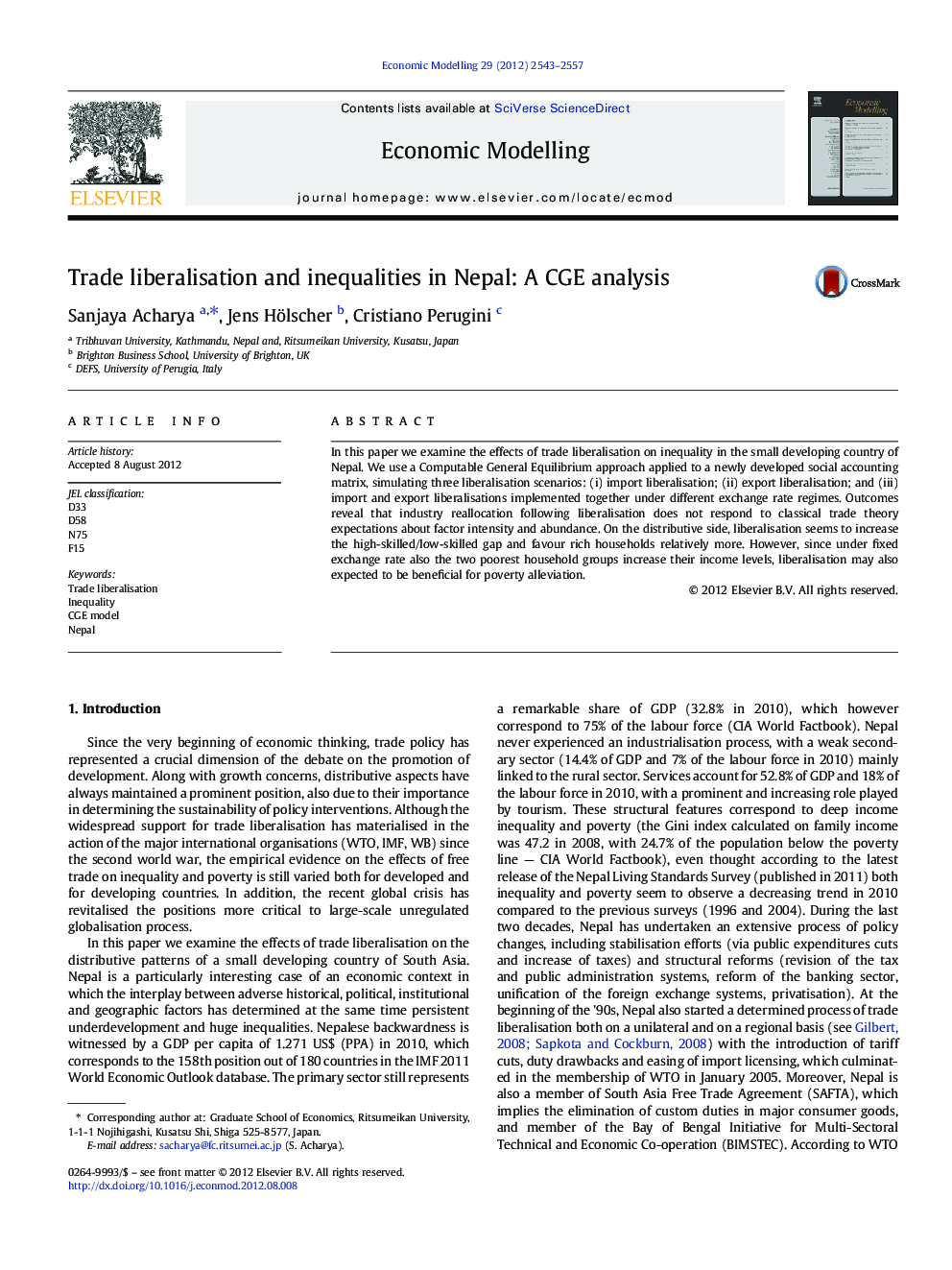| Article ID | Journal | Published Year | Pages | File Type |
|---|---|---|---|---|
| 5055107 | Economic Modelling | 2012 | 15 Pages |
In this paper we examine the effects of trade liberalisation on inequality in the small developing country of Nepal. We use a Computable General Equilibrium approach applied to a newly developed social accounting matrix, simulating three liberalisation scenarios: (i) import liberalisation; (ii) export liberalisation; and (iii) import and export liberalisations implemented together under different exchange rate regimes. Outcomes reveal that industry reallocation following liberalisation does not respond to classical trade theory expectations about factor intensity and abundance. On the distributive side, liberalisation seems to increase the high-skilled/low-skilled gap and favour rich households relatively more. However, since under fixed exchange rate also the two poorest household groups increase their income levels, liberalisation may also expected to be beneficial for poverty alleviation.
